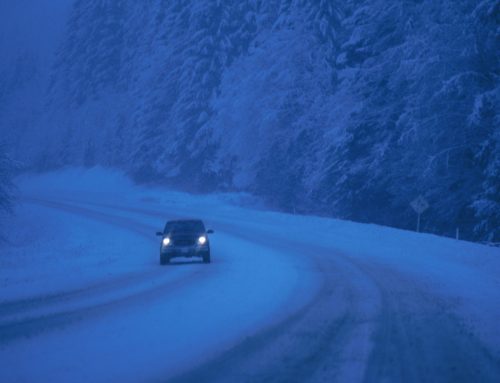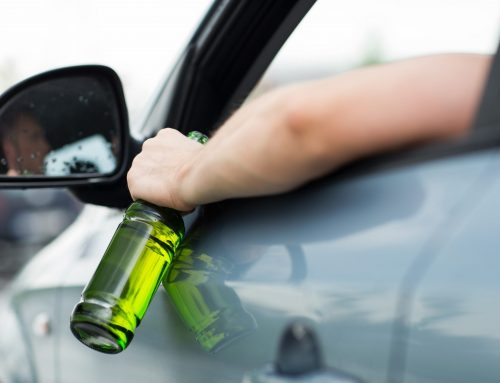Contrary to popular belief, Arizona isn’t sunny skies year-round. Many regions of the state experience heavy rains, ice and snow throughout the winter months. Driving in these weather conditions comes with a slew of risks. To help ensure your safety and the safety of others, we’ve put together some winter driving safety tips that both experienced drivers and novice ones alike can use to drive safely in winter weather.
Driving in adverse weather conditions
Winter driving safety starts before you even leave your home—with proper preparation. First, check online for the current weather conditions. If there’s a storm, and reconsider whether you should wait it out at home before hitting the road. Also, take the time to check your tire pressure and equip your car with snow tires, if needed.
Your speed should be reasonably reduced when driving on wet, snowy, or icy roads. You should also double the space between your vehicle and the vehicle in front of you when driving in bad weather.
Be sure to turn on your headlights to see and be seen in low visibility during a rain or snow storm. When braking on snowy, icy, or wet roads, apply the brakes gently and gradually increase the pressure, but do not brake to the point where the wheels lock.
Driving in rain
Be wary of driving within the first 30 minutes after a rainstorm begins, as oil and grim combine with rain, causing roads to become more slippery and hazardous.
At speeds upwards of 50 mph, your car runs a greater risk of hydroplaning. The best way to prevent hydroplaning is to slow down. However, if you do hydroplane, take your foot off the accelerator and do not brake, avoid steering changes, and hold both hands firmly on the steering wheel until your tires resume contact with the road. If your tires are bald, under-inflated, or worn, they have a greater risk of hydroplaning.
If you are caught in a flash flood, do not drive through a flooded area, as water can flood your engine. If you must drive through water, do so at a slow and steady speed, and do not cross a flooded area at the same time as another vehicle to prevent waves. After leaving the flooded area, check your brakes to make sure they are dry.
Driving in snow and ice
As a precaution, maintain at least half a tank of gas and see that your fluids are properly filled before driving. Just as with driving in the rain, driving in snow and ice requires you to slow down during turns and avoid changing speed or directions. You should also be aware of possible ice on bridges, shady areas, or other areas of low visibility.
It is advised that you avoid driving in a snowstorm, but if you must drive in a snowstorm, have the following items in your vehicle:
- Snow tires or tire chains on snowy and icy roads
- An ice scraper and small broom to clear your windows and lights
- Road flares in case you break down in an area with low visibility
- Emergency gear, including a blanket, flashlight, water, food, and warm clothing
- Jumper cables
- Rock salt, sand, or cat litter to pour on the ground if your car gets stuck in the snow
- Should your car get stuck while driving in the snow, you can use the rock salt, sand, or cat litter to gain traction and allow your car to pull out easier. If you are stranded, you should be aware of your surroundings, turn on your car once an hour to run the heat and engine (ensure that there is nothing obstructing your exhaust pipe), and call 911 for assistance.
For those new to driving in snow, these tips may seem like a lot. But remember, the key is preparation. Proper planning, having the right supplies and knowing the condition of your car will make the difference between driving safe or winding up stuck in the snow—or worse, in a crash.
Do you have a question about winter driving safety, or do you have a tip to share? Share it with our community in the comments!








